In this review, we’re taking a look at the new $649 Topping D70s DAC.
Disclaimer: AposAudio sent us the Topping D70s for this review, free of charge. I only covered the customs fees & taxes. All thoughts and experiences with the product are naturally my own. You can find more about it HERE.
Topping
Topping Electronics & Technology, known as ‘TOPPING’, is based in Guangzhou, China, and was established in 2008. They build some of the best DACs and AMPs when it comes to the price-to-performance ratio. They have a dedicated R&D team of skilled engineers and audiophiles. Topping also states that they are heavily invested in the latest audio testing machinery such as the APx555 from Audio Precision. Of course, all of this means one thing for us consumers, better devices! I have used many Topping products in the past, the oldest two I remember are the TP30 and the NX1. The year was 2013 I believe. I never had any problems with their products despite using 20+ of them throughout the years. They have a good track record in my book so I was quite thrilled to test the D70s.
TOPPING D70s MQA DAC
Highlights & Technical Specifications
Input: USB, Optical, Coaxial, AES, IIS, Bluetooth.
Output: RCA / XLR
THD:< 0.0002% @20-20kHz
Dynamic Range: XLR/127dB ; RCA/124dB
Output Impedance: XLR 200Ω; RCA 100Ω
PCM: up to 32bit-768kHz
DSD: up to DSD512 (Native)
COAX/OPT/AES IN: up to 24bit-192kHz
Bluetooth Codecs: AAC/SBC/APTX/APTX LL/APTX HD/LDAC
Dimensions: 25.0 x 19.5 x 5.0cm
Weight: 1.9 Kg
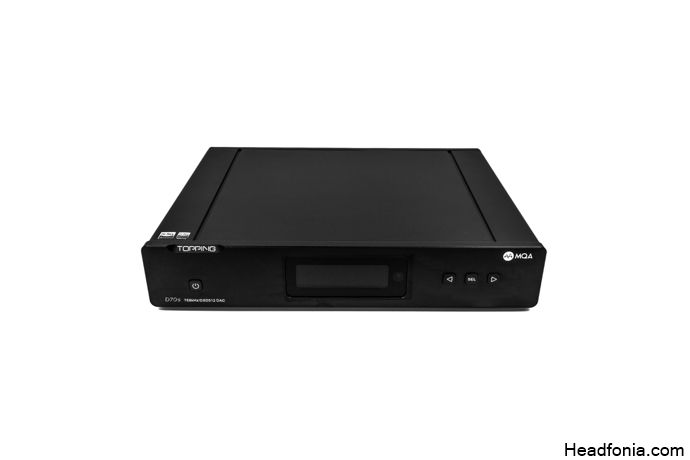
Accessories & Build Quality
The Topping D70s comes in a quite large, black cardboard box that I couldn’t fit into my lightbox.
The accessories are modest like they usually are with DACs, you get a USB-A to USB-B cable, a remote, an AC cable, and a Bluetooth antenna along with the manual. Measuring 25x19x5cm, the D70s is by no means a small device. It weighs about 2 kilograms so it is heavy as well. These numbers do not matter at all to me as it is a desktop DAC and I don’t plan to travel with it.. yet.
Let’s talk about the build quality. Topping has always paid attention to the build and they generally use CNC’d aluminum casings. The D70s is no different. The paint job is excellent as well, it resists scratches much better than the SMSL’s matte black SU-9. There are two color options available, matte black and matte gray. The Gray one looks gorgeous in the pictures and I am sure it is in real-life as well.
The overall build really did impress me and it is surely a device built to last. Let’s move on to the layout. I am going to be honest, as always, I do not like to control volume via buttons. My eyes look for a knob to turn, even though I use all of my DACs in maximum output (Pure-DAC) mode. The good thing is that we have a remote and volume can be controlled from there, swiftly. It is especially good if you plan to use this directly with your active reference monitors as many of them do not offer practical volume control. On the front, we have a screen and 4 buttons. The screen shows information about the volume level, sample rate, PCM/DSD/MQA status, active input & output.
The device can be controlled through the buttons though it is not very easy to navigate with them. I suggest you control the device via remote as it is much easier that way. Buttons are tactile and do not wobble, as you would expect from such a device. All the I/O options are located on the rear side of the DAC. You have quite a few options here. From left to right I/O options are as follows: XLR, RCA, HDMI IIS, optical, coaxial, USB and AES. You have six options and you can connect multiple devices and switch between them quickly via the remote. Everything on the back feels solid and well-made. 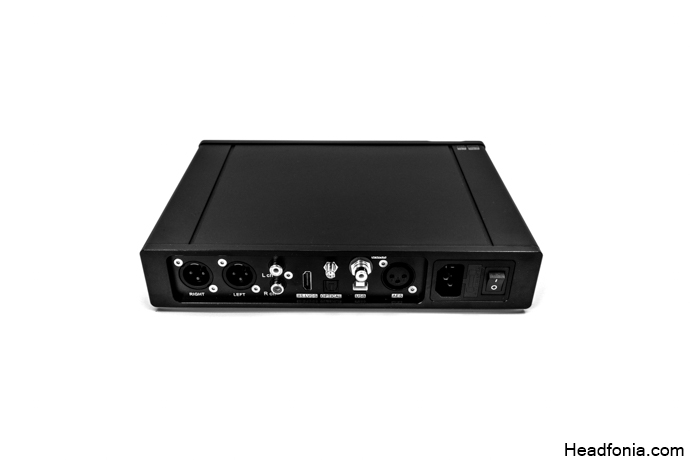
Technology Inside
The Topping D70s’ design is based on dual AKM AK4497 and OPA1612 op-amps in a balanced configuration. We, the audiophile bunch are quite acquainted with the configuration, as they are used on many boards. Of course, chips do not mean much without proper implementation, a good filtering section, and of course, optimized & stable power delivery. We’re in luck today because I am reviewing a product from Topping. Their expertise comes into play exactly here. Upon checking out the board, I can see the high-quality Nichicon capacitors (big ones, thanks to the vast space chassis provides) and a couple of Accusilicon’s ultra-low jitter clocks as well as an XMOS XU216 USB processor. I also see the same brilliant power supply that was previously used in the D90. It is apparent that Topping did a very comprehensive R&D for this DAC and they used high-quality parts to maximize the performance of the D70s. The board is eye-pleasingly neat and packed. There are quite a few voltage regulators on the board as well. The D70s uses a CPLD as well to improve signal stability and further reduce the jitter for a cleaner, better SNR.
To recap this section, I can say that you are getting your money’s worth under the hood, without a doubt. The performance on paper is quite amazing and let me tell you this, just wait until you hear it.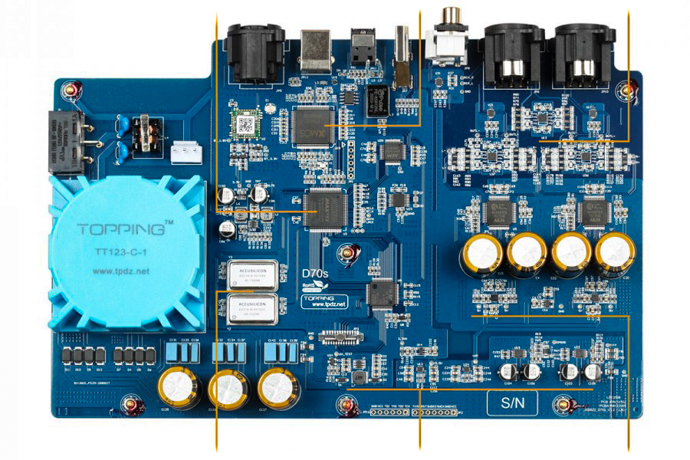
Features
The Topping D70s offers a lot of I/O options and proper Bluetooth capability so you can use it in many configurations. For the Bluetooth chip, Topping went with the CSR8675. It is a premium-tier chip from one of the world’s largest chip manufacturers, Qualcomm. It supports quite a few codecs, which can be seen on the technical specifications, although I only care for one of them and that is LDAC. The maximum bitrate support of LDAC is 990 kbps. That is, of course, not fully Hi-Res, at least in my book, but it is probably the best we’re going to get in 2021. It is great to see here as I sometimes want to hook my phone to D70s and listen to podcasts & playlists via my active monitors. Note that you will need an LDAC compatible phone to use it.
Topping extended the wireless range with the included antenna and I can easily change songs without interruptions from the kitchen so that’s two thick walls. The range is very good. For the USB processor, Topping chose the 2nd generation 16-core XMOS XU216, which supports up to 32bit/768kHz PCM and can also decode DSD512 natively. Just like the SMSL SU-9, the Topping D70s fully decodes MQA as well. If you don’t know what that is, let me explain. In a nutshell, Master Quality Authenticated (MQA) is an audio codec that lets you stream songs in Master/HiFi quality. After capturing and recording the performance, MQA folds the file to make it small enough to stream or download. They call this ”Music Origami”. Products with a full MQA decoder, like the D70s, unfold and decode the file to deliver the highest possible rate for the user. Popular streaming service Tidal supports MQA and I use it daily.
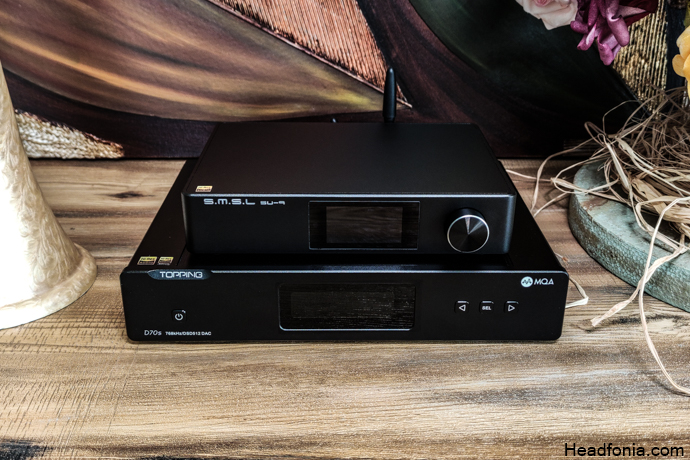
If you regularly use SPDIF, the next sentence is going to make you quite happy. Topping used an AK4118 chip and it is one of the lowest jitter receivers on the market right now. It handles the optical, coaxial & AES signals for the D70s and supports up to 24-bit 192kHz. Let’s talk about the settings. As I stated before, navigating and controlling the device via remote is much easier than the buttons on the front. In the menu, you have quite a few options. You can switch between outputs, XLR only & RCA only or you can toggle them both on. You can change the line-out behavior between Pure-DAC mode (fixed volume) and Pre-mode.
The Topping D70s offers a couple of PCM filters to fine-tune the signature of the DAC. There are 6 filters in total. Mode 1 to 6. Mode 3 is the default filter. I honestly do not dwell on these as they tend to do more harm than good, however, I liked the filter mode 4. I will talk about it in the sound section. There are couple more subsections in the menu, the majority of them being related to the IIS interface. Another great feature of the D70s is the ability to auto-standby. I wish the SMSL SU-9 had this feature too. It is just so practical. Lastly, you have the option to factory reset the device if a need arises for such a measure.
The article continues on page 2. Click here or use the jumps below.







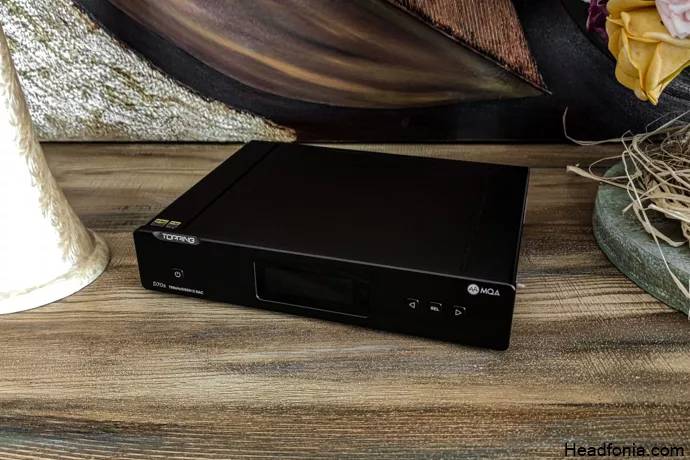
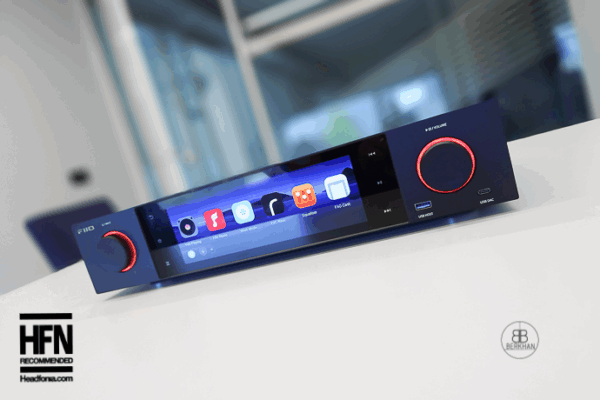
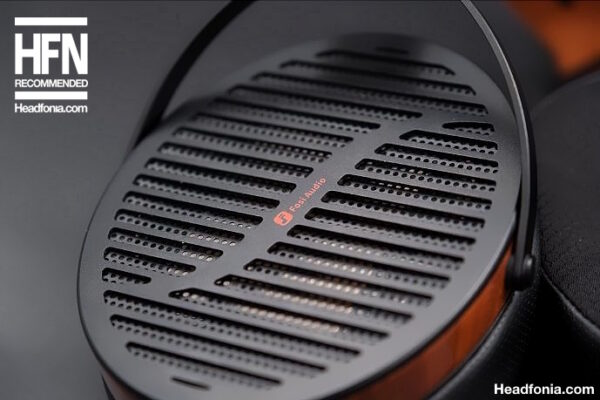
Berkhan
Going the distance bro.
Joshua
Awesome review. Do you think that extra 200 over the SU-9 is worth it?
MhtLion
Thanks for the review. Do you have comparisons against DACs other than SU-9? Topping D90 is close in price, so I think most people will be interested on D70s vs D90. Well I’m certainly am. I also wonder if D90s is coming shortly.
Tom
How does this compare to the X16? Trying to decide between SU-9, X16, and this D70S.
Yagiz
https://www.headfonia.com/gustard-x16-review
You may want to check the comparison section, Tom.
Stay Safe